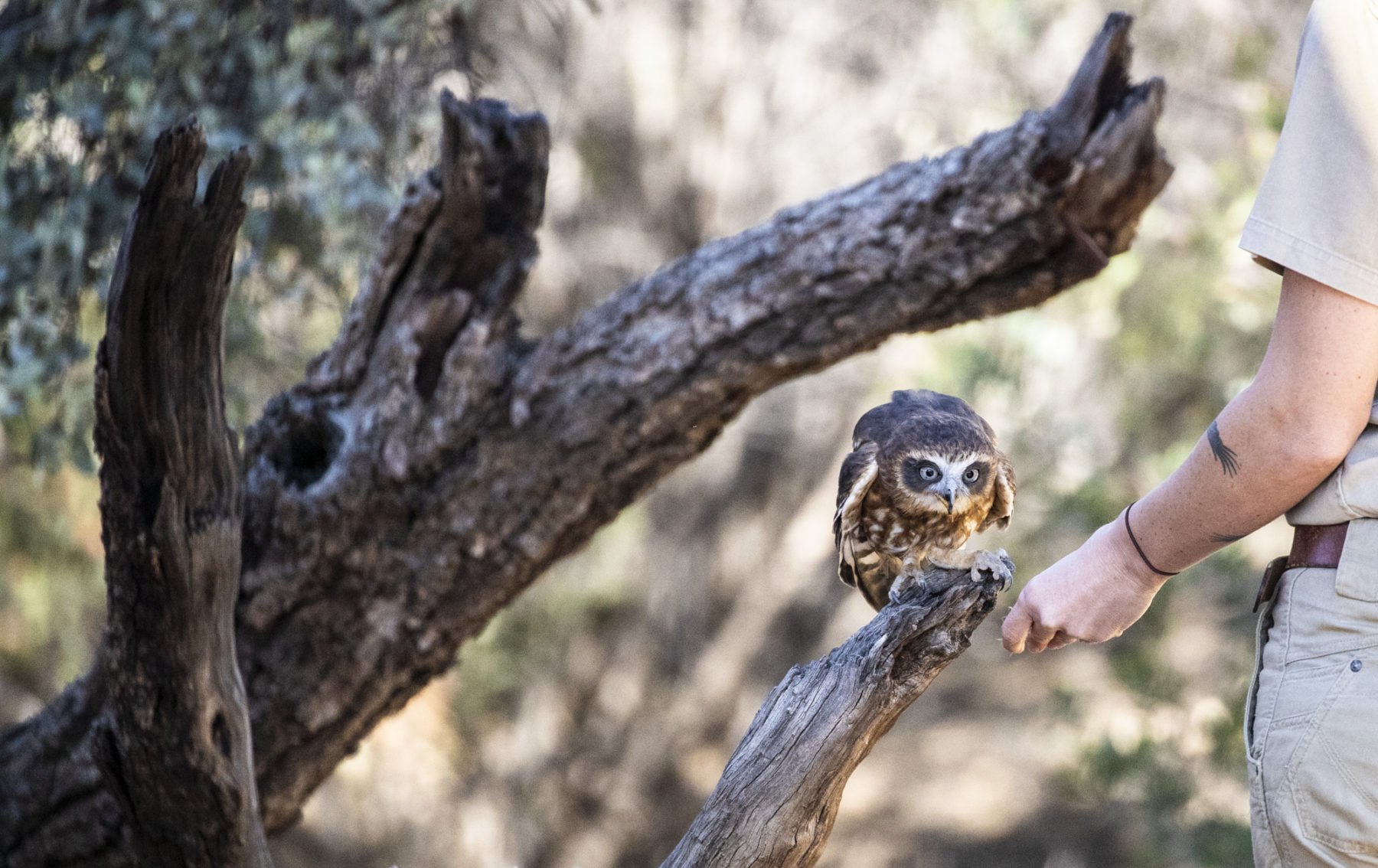The Red Centre transformed
It didn’t look like the Red Centre. The track we were following in our 4WD was covered in tall grass that nearly reached the window, stretching to the horizon like a sea of green. It was only the brief, intermittent glimpses of the track’s twin red ribbons of dirt and the squirming of soft sand under the Sport’s wheels that confirmed our location, deep in the desert country southwest of Alice Springs. We couldn’t have got further away from our everyday city lives if we tried – and it felt fantastic.
It had been five years since we’d been out in the Red Centre on a 4X4 trip – two kids under five and all that entails took care of any spare time – but we’d decided this year was time for a return to one of the best touring and camping regions in Oz and had been counting down the months since we’d booked our flights at the start of the year. This was also our daughter Sarah’s first big off-road adventure and we’d been filling her in on the appeal of “all that red sand in the desert” – something we thought might actually be quite sparse after glimpsing the sea of green from the air as we flew into Alice.
Our plan was a quick week of touring and camping, with good mate and Alice Springs local John Stafford as our guide (John runs Alice Springs Expeditions and knows the Red Centre region like the proverbial back of his hand). I had travelled extensively with John over many years during my tenure as Editor of a 4WD magazine, so I was looking forward to a mix of great driving, awesome campsites, good company and the odd beer or three around a campfire. It was, in short, shaping up as the perfect Red Centre adventure. And said adventure started pretty well, too; I had been lucky enough to score a Range Rover Sport TDV6 as our rig for the week – complete with two spare wheels – and was keen to see how this latest incarnation of one of my favourite 4WD vehicles was going to perform in this sometimes challenging country. The shiny silver Rangie looked slightly lost parked at Alice Springs Airport among all the dusty Toyotas and Nissans, but I knew we’d soon rectify its “city” appearance.
John’s plan was for us to spend two days west of Alice Springs, exploring the area from Larapinta Drive south to Ernest Giles Road. This mini-expedition would include Owen Springs Reserve, Wallace Rockhole community and Finke Gorge National Park. We’d then return to Alice for a food and fuel top-up before striking east towards the remote Ruby Gap Nature Park for a couple of days to explore the area’s beautiful gorges, long, sandy river beds and doze down in some of the best campsites in the NT.
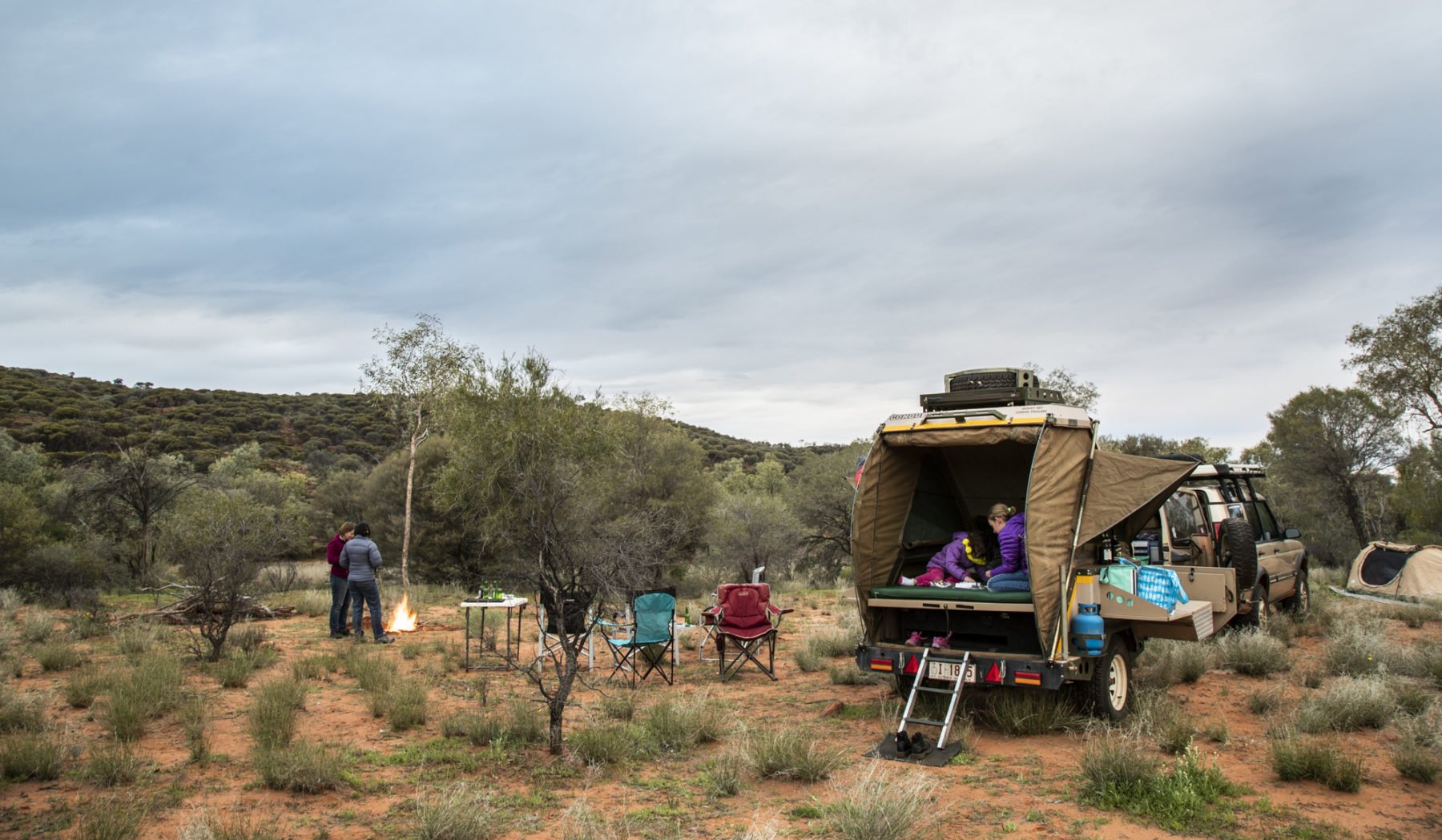
Our first day was a mix of bitumen and sandy desert tracks, once we’d turned off Larapinta Drive. As mentioned earlier the desert was engulfed by lush green grasses that had sprung up after a particularly precipitous wet season. We moved south as we tracked toward the low-lying rocky hills that comprise the tail end of the Waterhouse Range. The driving was relatively cruisy, with the Sport’s Terrain Response system set to “Sand” mode (Land Rover’s TR system has four different settings in the Sport that alter throttle response and traction control for optimum performance on different surfaces) to compensate for the vehicle’s road-biased tyres. The only sound – beside Sarah asking where all the red sand had disappeared to – was the brushing of grass on the Sport’s underbelly as we followed John’s Discovery 2 and camper-trailer through the sea of green.
The Red Centre: there’s nothing quite like it
There’s something about bush camping in remote country that sticks with you. Whether it is the fact you have the choice of pretty much anywhere to roll out your swag, or that you have the (increasingly rare) opportunity to sit around a campfire – and cook on it – while the southern stars grow brighter above your head, dossing down among all this is an always memorable experience. Our campsite for the first night was a nice clearing near a small gorge that cut through the rocky hills to our east. There was ample space to set up the camper-trailer, Oztent and swags, with plenty of firewood and space for the kids to get out and explore. We’d only been driving for three to four hours, but already we were a world away from the crazy pace of city life. And yeah, that sounds like a cliché, but that night – our first outback camp in five years – I was prepared to live it to the letter!
Another addition to living the cliché was not having to rush the next morning; the perfect outback sunrise greeted us when we decided to get out of bed and this was followed by a damn-near perfect cooked brekky, before packing up and then loading up all the camping gear. After a quick glance over the Hema Maps 4WD Maps app on my iPhone, it was time to turn west toward the aboriginal community of Wallace Rockhole where John was supposed to pick up some pottery from one of the community’s artists.
A quick 45-minute drive through stony, open desert country – dotted with brush and small, tough plants that seemed to thrive here – was all it took to reach the community, only to find it was pretty much deserted. The Alice Springs Show was on in town and we guessed that most of the locals had headed in to the Red Centre capital to check it out. We soon departed, following the track just north of town that turns west toward Finke Gorge National Park. The driving along this section was mainly red sand, with plenty of washouts mixed in with smoother sections as we passed more open country to our west, with the higher, more dramatic ridgelines of the James Range shadowing us to the south. It was once we reached the junction with the Boggy Hole track that we turned south and cut through the James Range itself, following the sandy bed of the dry Ellery Creek through Todd Glen, with more beautiful rugged red-rock cliffs on both sides of the track. We lowered our tyre pressure here; John’s Discovery 2 was running mud-terrain tyres so it was doing it easy, and even our Sport’s road-biased rubber wasn’t inhibiting us too much, but we took the safer-is-better option to increase our tyre contact patch to increase grip through the soft stuff. The drive through here was magic; the rocky cliffs contrasted with the sand and huge gums that followed the line of creeks that crisscrossed this area.
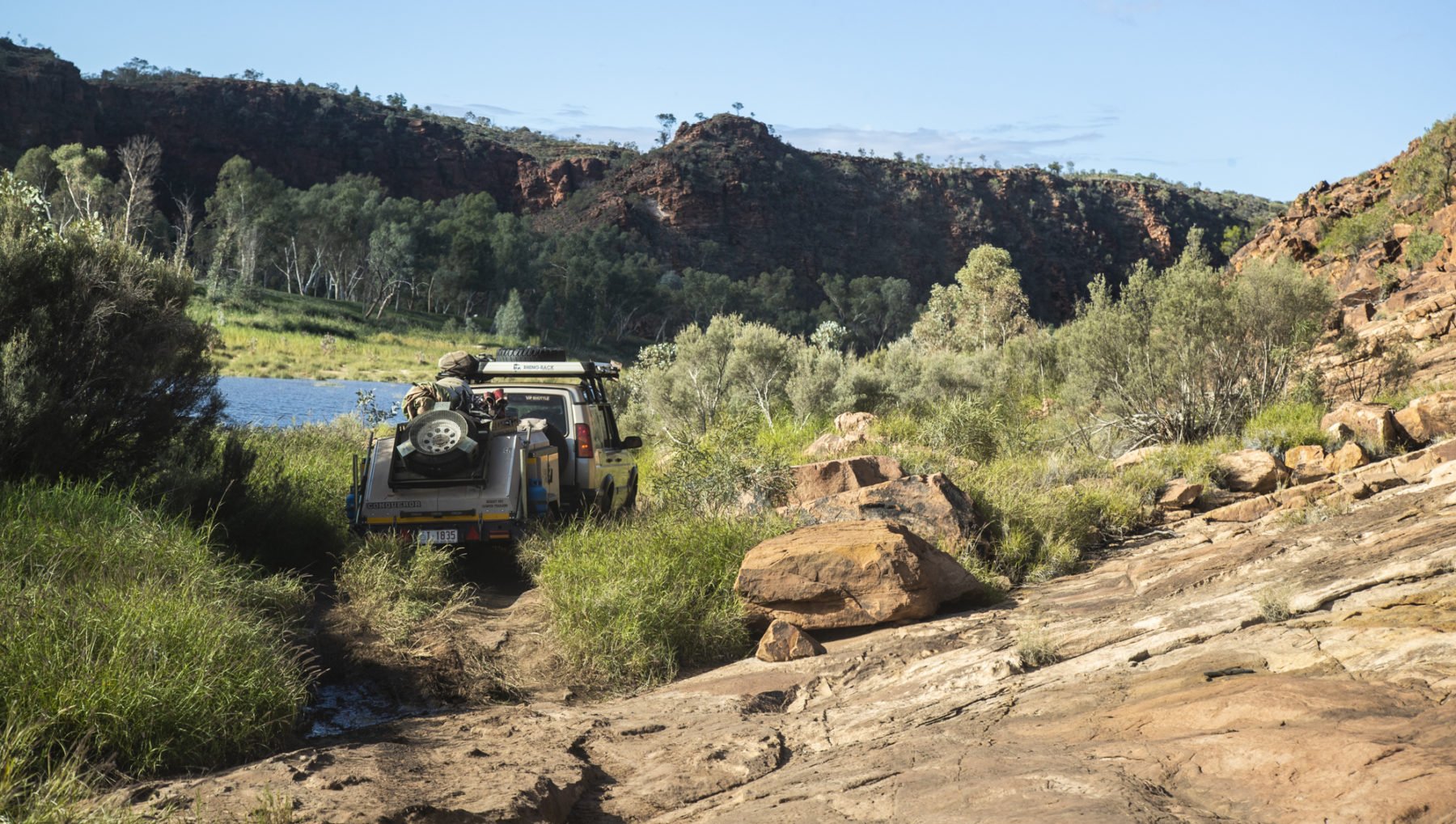
It took an hour or so to reach the junction of the Finke River and Ellery Creek, and it was a great mix of driving conditions, ranging from the ubiquitous soft sand to rocky sections and a few water crossings. There was plenty of water about and the last water crossing, just north of Boggy Hole itself, ended up being a non-event as the water was too deep for us to safely negotiate. We met a young lad in an old ex-army Land Rover who had just crossed it driving north and once he marked more than a metre up his Landy’s door with his hand, we knew the Rangie – with no snorkel – would have been (excuse the pun) well and truly out of its depth. The detour around also saw us meet another group of four vehicles – the only others we saw all trip – and then it was just an hour on to our second camp on a wide stretch of the Finke River, complete with a waterhole at the southern end for the kids to explore, and a spectacular cliff-face lit up by the sun as it dropped below the ranges behind us that evening.
A taste of town then on to the far east
It was a mix of dry (and wet) riverbeds and the tall sand dunes of the Palmer River section of Finke Gorge NP that comprised our continued journey south the next morning. The night had been colder than the previous one as the last of the cloudy weather disappeared, and it looked like staying that way for the remainder of our Red Centre stay. The drive south to Ernest Giles Road was pretty quick, but tinged with a slight regret that we didn’t have longer to enjoy this part of the Centre. However, Alice Springs was calling; we’d chewed through most of our food and both vehicles needed a refuel before we’d be able to turn east to Ruby Gap Nature Park.
The benefits of the Range Rover Sport’s capability were never more obvious than the shift from slow, sandy driving to the fast highway blast back to Alice. The vehicle hadn’t put a foot wrong to this point, with the only slight niggles being its width when it came to squeezing between trackside vegetation and the fact it didn’t have low-range gearing (it’s an optional extra on Range Rover Sport). Not that that had made any difference where we’d driven; the Terrain Response settings and the Sport’s impressive drivability in rugged terrain had made it all seem too easy. The ability of the vehicle to dust itself off after a few days in the sand and rocks, and then shoot us smoothly and rapidly to our destination was impressive. Our few days in the proverbial middle of nowhere made Alice Springs seem busier than what it really is, but we knew it was only a short stopover before a few nights back out bush again. And it was rather nice to tuck into a beautifully cooked steak and some draft beer at dinner that night…
The great thing with the NT is that there never seems to be a hurry to get anywhere. This suited us fine and meant a leisurely start to the next leg out to Ruby Gap, with some shopping taken care of in the morning before we hit the Ross Highway. The trip on bitumen and then graded dirt was uneventful and after a quick stop at Arltunga (the well preserved historical gold mining site – well worth a look), which was extended slightly as we helped a couple change a flat tyre and then stopped off at Ross River Homestead for some beer, we drove deeper into the steep hills of the Atnarpa Range, chasing the sunset.

The track into Ruby Gap is brilliant; it becomes progressively rougher as the scenery ups the wow factor, making the concentration and effort required to drive it more than worthwhile. Once we reached the entrance to the park and deposited the camping fees in the park fee box, it was time to really soak up this amazing part of the Red Centre.
The name Ruby Gap is something of a misnomer; in 1886 David Lindsay reported finding what he presumed were rubies in the Hale riverbed. This led to a mini ruby rush that lasted only a couple of years before prospectors (and buyers) realised these “rubies” were in fact garnets. We weren’t looking for precious stones but we did find excellent four-wheel driving along the Hale River, with its sandy base just dry enough to ensure we didn’t become bogged as we drove further into the park looking for a campsite. Up until this point we had, again, only encountered a couple of oncoming vehicles and this sense of remoteness continued for the rest of the day. We passed one other campsite – the couple there were very well set up – before we found our own slice of camping paradise another 500m or so upriver. With a great view back down the valley, a few reasonable sized waterholes right below us, and no-one else around, it was brilliant – the perfect base for a couple of nights.
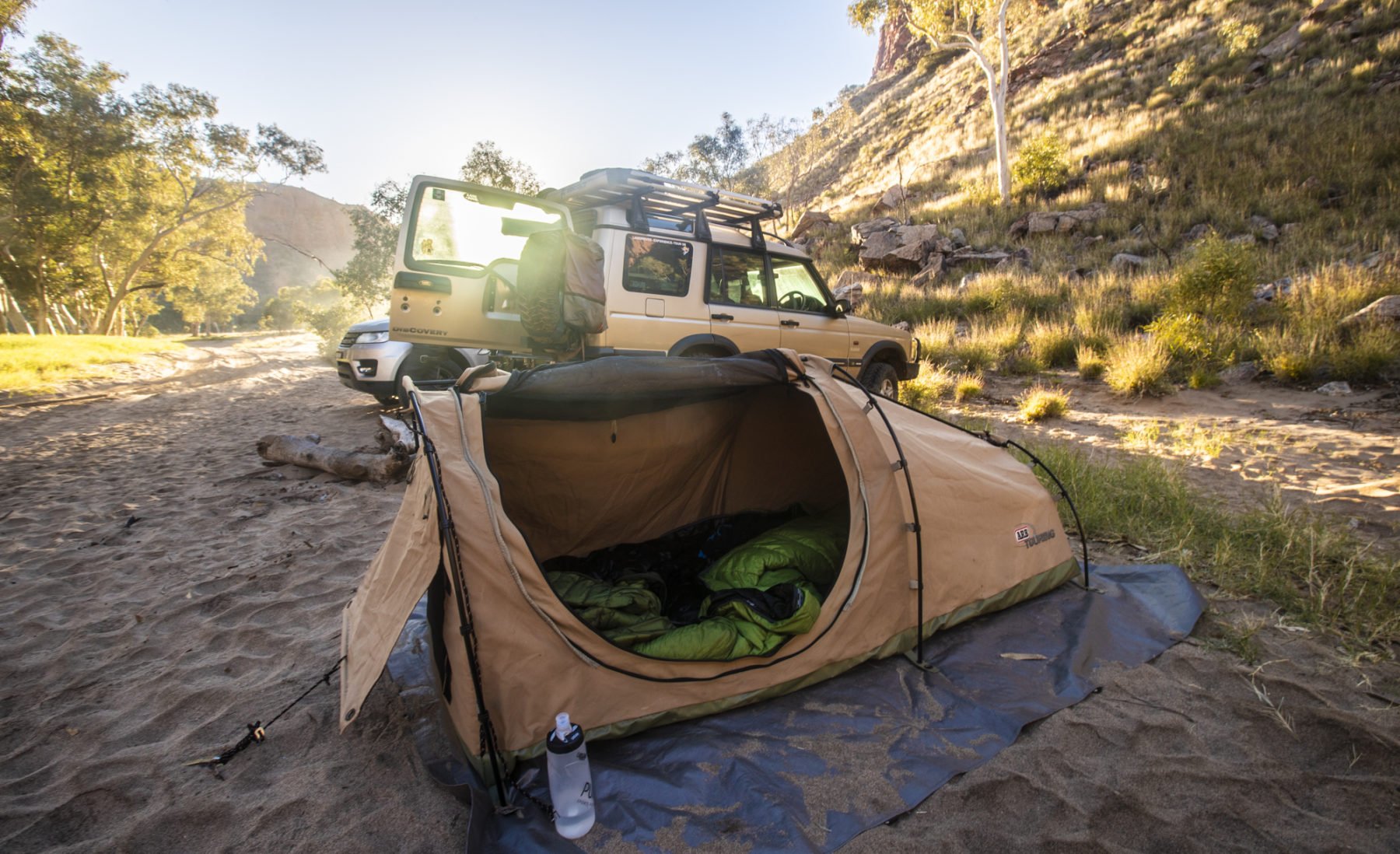
On our second morning we decided to explore further up the gorge, finding the going pretty easy until the last section of high, jagged rocks and drop-offs saw the Sport reach its limit. John’s lifted Discovery 2 got through but the Sport’s longer belly and road-biased tyres robbed us of further exploration (I reckon with some chunkier, higher-profile mud-terrain tyres we would have made it). Not that we were complaining; it simply handed us the perfect excuse to return to camp and enjoy the rest of the day having a yarn and downing a few beers while the kids explored nearby. For me, this was one of the major bonuses of this trip; Sarah’s first outback adventure had been everything she’d hoped for (going by her pleas to not return to Sydney). This, in turn, gave me the perfect excuse to start planning our next outback trip – a topic that took up a good part of the afternoon – and a few beers…
All good things must come to an end
That night we saw more stars in the sky than I can remember despite my many years of outback touring, and the following morning we were greeted by a simply brilliant sunrise. If we spotted a film crew making the most of this perfect image of “Outback Australia” I wouldn’t have been in the slightest bit surprised. But, thankfully for us, we had it all to ourselves.
The week of camping and off-roading had been, as these trips usually are, way too short. We’d barely touched on the huge number of great campsites and awesome locations that are available Australia’s Red Centre, but even as we drove back into Alice, soaking up the last magnificent taste of the outback, we were planning a return. A too-short visit to the awesome Alice Springs Desert Park was a great way to finish the experience for all of us – especially Sarah as she at last got to see a dingo (we’d had some footprints around camp but hadn’t spotted any when out and about) as well as the Desert Park’s awesome Birds of Prey show.

The Red Centre has enough spectacular offerings to keep any off-road tourer enthralled for months, if not years, and our plans to come back here made our return to city living much easier to handle; our time back in the hustle and bustle would just be viewed as a necessary delay before we could return to this vast timeless land.
The young adventurer
Travelling with a young child – especially when it involves a few hours in a vehicle each day – can be a daunting prospect for parents. And so it was for my wife and I when we decided to tackle this week-long vehicle-based adventure. We’ve been on a few weekend camping trips but these were summer-based at a beach campground so there were plenty of activities to keep the young’uns occupied. Driving between campsites in the desert, however, is a bit different; packing some of Sarah’s favourite toys and offering her heaps of encouragement beforehand worked wonders on this Red Centre camping trip.
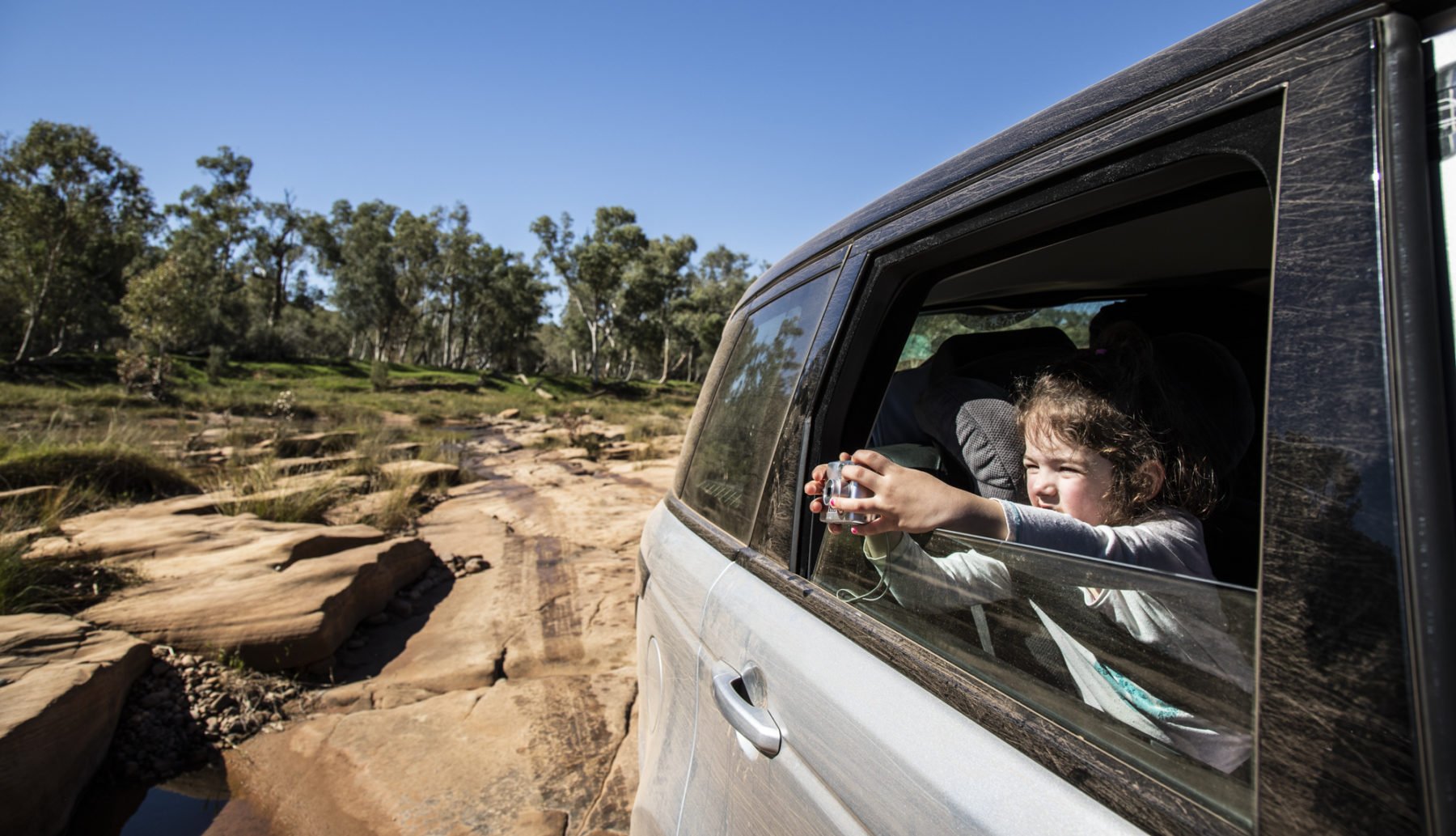
Sarah even managed to find one of Rachel’s old digital cameras and became a shutterbug on the trip, happily taking photos out the window of the vehicle and when we were camped for the night. Getting young kids involved in the packing and unpacking at a campsite is a great way to make them feel a part of the “big adventure”, as did cooking marshmallows around the campfire, while educating on fire safety.
Something different and intriguing will always work with young minds, and such was the case with this adventure for Sarah. She became so enamoured with the Red Centre that it became a case of convincing her that we really should head home at some point.
Fact File
Alice Springs has all the amenities you will need to stock up for an off-road adventure in the surrounding region. Accommodation ranges from luxury resorts and hotels to excellent caravan parks and camping grounds.
For all national park visitor fees and camping fees, plus track conditions, check out parksandwildlife.nt.gov.au
Alice Springs Expeditions runs day, overnight and longer 4WD trips to a number of locations around Alice Springs and beyond. For info on the guided trips – there is even the option to make up your own bespoke adventure – see www.alicespringsexpeditions.com.au
Finke Gorge National Park is 138km west of Alice Springs, via Larapinta Drive. As well as the 4X4 track that runs north-south through this park, there is also a side track to Palm Valley and its campground, which is well worth a visit. Be fully prepared when driving in this park – take plenty of recovery gear and check beforehand as to whether the track is open. Bush camping is free along this route.
Ruby Gap Nature Park is 150km east of Alice Springs, via the Ross Highway. The final track in is for high-clearance 4X4 vehicles only. The campsites are dotted along the riverbank with plenty of space between them. There are no facilities. Camping fees apply.
The best time to visit the Red Centre is from April through to the end of October.
The Alice Springs Desert Park is well worth a look if you’ve got a half- to full-day in town. See www.alicespringsdesertpark.com.au
